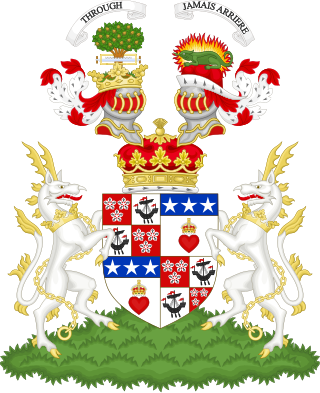
Duke of Hamilton is a title in the Peerage of Scotland, created in April 1643. It is the senior dukedom in that peerage, and as such its holder is the premier peer of Scotland, as well as being head of both the House of Hamilton and the House of Douglas. The title, the town of Hamilton in Lanarkshire, and many places around the world are named after members of the Hamilton family. The ducal family's surname, originally "Hamilton", is now "Douglas-Hamilton". Since 1711, the dukedom has been held together with the Dukedom of Brandon in the Peerage of Great Britain, and the dukes since that time have been styled Duke of Hamilton and Brandon, along with several other subsidiary titles.
William Sinclair (1410–1480), 1st Earl of Caithness (1455–1476), last Earl (Jarl) of Orkney, 2nd Lord Sinclair and 11th Baron of Roslin was a Norwegian and Scottish nobleman and the builder of Rosslyn Chapel, in Midlothian.

The Lord of Abernethy was from the 12th century to the 14th century the hereditary holder of the church and lands of the Scottish monastery at Abernethy. It gradually evolved alongside the title Abbot of Abernethy, displacing that term in extant sources by the end of the 13th century. It was held by the descendants of Gille Míchéil, Earl of Fife.
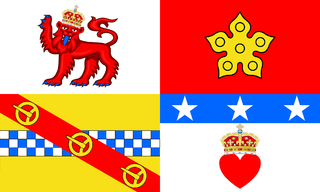
The Mormaer or Earl of Angus was the ruler of the medieval Scottish province of Angus. The title, in the Peerage of Scotland, is held by the Duke of Hamilton, and is used as a courtesy title for the eldest son of the Duke's eldest son.

Clan Sutherland also known as House of Sutherland is a Highland Scottish clan whose traditional territory is the shire of Sutherland in the far north of Scotland. The chief of the clan was also the powerful Earl of Sutherland; however, in the early 16th century, this title passed through marriage to a younger son of the chief of Clan Gordon. The current chief is Alistair Sutherland, who holds the title Earl of Sutherland.

Clan Sinclair is a Highland Scottish clan which holds the lands of Caithness, the Orkney Islands, and the Lothians. The chiefs of the clan were the Barons of Roslin and later the Earls of Orkney and Earls of Caithness.
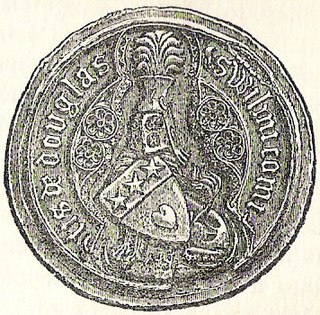
William Douglas, 1st Earl of Douglas was a Scottish nobleman, peer, magnate, and head of the Black Douglas family. Under his leadership, the Black Douglases continued their climb to pre-eminence in Scottish politics begun under his uncle, Sir James the Good, as well as their military dominance of the south of Scotland.
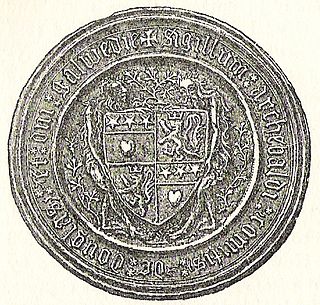
Archibald Douglas, 4th Earl of Douglas, Duke of Touraine, was a Scottish nobleman and warlord. He is sometimes given the epithet "Tyneman", but this may be a reference to his great-uncle Sir Archibald Douglas.
Margaret Stewart, Countess of Angus and Mar was Countess of Angus and Lady of Abernethy in her own right. Her father was Thomas Stewart, 2nd Earl of Angus.

Sir William Douglas "le Hardi", Lord of Douglas was a Scottish nobleman and soldier.
George Douglas, 1st Earl of Angus (1380–1403) was a Scottish nobleman and peer.
George Douglas, 4th Earl of Angus, Lord Douglas, Abernethy and Jedburgh Forest was a Scottish nobleman. He was the son of William Douglas, 2nd Earl of Angus and Margaret Hay of Yester. Known as the Great Earl of Angus. He succeeded to the Earldom following the death of his childless brother James Douglas, 3rd Earl of Angus in 1446. He was to become the first Red Chief of Douglas.
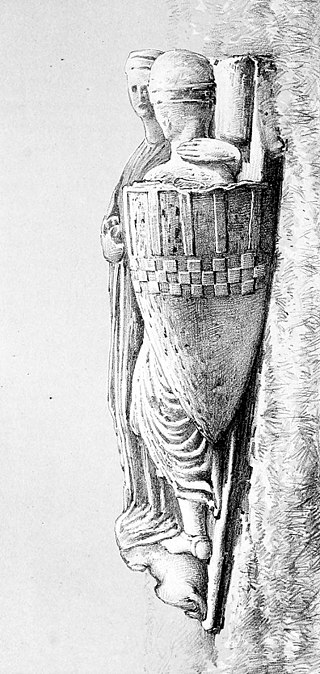
Walter Bailloch, also known as Walter Bailloch Stewart, was distinguished by the sobriquet Bailloch or Balloch, a Gaelic nickname roughly translated as "the freckled". He was the Earl of Menteith jure uxoris.
Alexander of Menteith, a Scottish nobleman and member of the Stewart family, he was the Earl of Menteith.

Princess Joan Stewart, Countess of Morton, also called Joanna, was the daughter of James I, King of Scotland, and the wife of James Douglas, 1st Earl of Morton. She was known, in Latin, as the muta domina [mute lady] of Dalkeith.
William Douglas, 1st Marquess of Douglas and 11th Earl of Angus (1589–1660) was a Scottish nobleman.
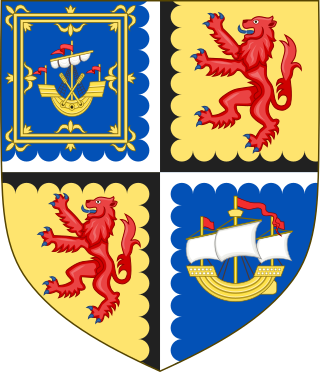
William Sinclair was a Scottish nobleman, the 2nd Earl of Caithness and chief of the Clan Sinclair, a Scottish clan of the Scottish Highlands.
Robert Maxwell, 5th Lord Maxwell was a member of the Council of Regency (1536) of the Kingdom of Scotland, Regent of the Isle of Arran and like his father before him patriarch of the House of Maxwell/Clan Maxwell. A distinguished Scottish nobleman, politician, soldier and in 1513 Lord High Admiral, Lord Maxwell was a member of James V of Scotland's royal council and served as Lord Provost of Edinburgh in 1524, 1527 and 1535. He was also an Extraordinary Lord of Session in 1533. In 1537, he was one of the ambassadors sent to the French Court to negotiate the marriage of James to Mary of Guise, whom he espoused as proxy for the King.

John Stewart, 1st Earl of Angus, Lord of Bonkyl, jure uxorisLord of Abernethy was a medieval Scottish nobleman.

Bonkyll Castle was a medieval fortress situated in the historic Scottish county of Berwickshire, from 1973 the Scottish Borders. It is situated 4 miles north of Duns and 4 miles south of Grantshouse. Few traces survive and the site is protected as a scheduled monument. It was the seat of a junior branch of the Stewart family, known as "Stewart of Bonkyl", from which was descended in another junior branch "Stewart of Darnley", the paternal family of King James VI & I of Scotland and England.













